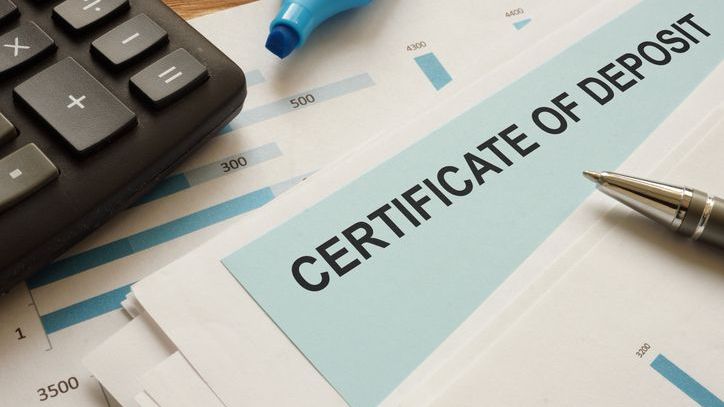

A bank transit number, also known as a routing number, is a nine-digit number that helps financial institutions identify what institution issued checks or other documents financial documents. Transit numbers have been around for over 100 years, and they help to keep track of and facilitate transactions between customers at different banks. Most people encounter transit numbers when setting up direct deposit payments or when transferring money between banks for their checking or savings accounts.
Do you have questions about how your bank account can contribute to your long-term financial plan? Speak with a financial advisor today.
A bank transit number is commonly referred to as a routing number, or ABA RTN (American Banking Association routing transit number). It is a nine-digit code that identifies a specific financial institution and is used when transferring money or identifying specific bank accounts. The transit number is printed on checks so other banks can determine which bank the check was first drawn from.
Every financial institution (including commercial banks, investment banks, credit unions, and brokerage firms) has a specific transit number. That number is on all negotiable instruments that issue by the institution. A negotiable instrument is a document that guarantees the payment of an amount of money; examples include a check, a promissory note, or a bill of exchange.
The transit number is specific to the bank, not to you. So if you and a friend of yours both opened checking accounts at the same bank branch, then the routing number on both of your checks will likely be the same. The different number to the right is your account number, which is the number that is unique to your individual bank account.

If you have a checkbook, the easiest way to find your bank transit number is to simply look at the bottom left corner of any check. Your transit number should be printed there. If you don’t have any checks, the transit number can still be relatively easy to find. You can find the number by heading to your bank’s website, calling your bank branch or support line, or visiting your branch in person.
Big banks like Wells Fargo or Chase typically have a different transit number for each state it has branches in. In addition to having multiple numbers for different states, some banks have different transit numbers for different types of transfers. Some banks assign one number for paper transfers, one for electronic fund transfers (EFTs), and one for wire transfers, because they handle these transactions in different ways. If you’re unsure about which routing number you need, just call your bank and they’ll be able to direct you.
The primary function of bank transit numbers has changed over time. When the numbers first arrived in 1911, their purpose was to help banks send the checks they received back to the banks that first issued them. This helped banks to keep track of their transactions – a necessity in the days before computers automated such transaction tracking.
Since then, the function of transit numbers has expanded. It now includes both wire transfers and ACH network transactions. Direct deposits, for instance, wouldn’t be possible without transit numbers. The routing number helps to determine what bank the deposit is going to. From there, your individual account number helps specify things further.
Bank transit numbers are even more necessary today than they were in 1911. Today there are over 28,000 different financial institutions across the country. Many of them with remarkably similar names, transit numbers play a crucial role in keeping them distinct.

Bank transit numbers are essential to our banking system. With thousands upon thousands of transactions taking place every day, banks need a way to quickly identify each other. Thanks to those nine numbers, we can enjoy conveniences like direct deposit and online transfers. The next time you need a routing or transit number, you’ll know where to look.
Photo credit: ©iStock.com/zoranm, ©iStock.com/Anchiy, ©iStock.com/fluxfoto
Hunter Kuffel, CEPF®Hunter Kuffel is a personal finance writer with expertise in savings, retirement and investing. Hunter is a Certified Educator in Personal Finance® (CEPF®) and a member of the Society for Advancing Business Editing and Writing. He graduated from the University of Notre Dame and currently lives in New York City.
Read More About Checking Account



More from SmartAsset
SmartAsset Advisors, LLC ("SmartAsset"), a wholly owned subsidiary of Financial Insight Technology, is registered with the U.S. Securities and Exchange Commission as an investment adviser. SmartAsset's services are limited to referring users to third party advisers registered or chartered as fiduciaries ("Adviser(s)") with a regulatory body in the United States that have elected to participate in our matching platform based on information gathered from users through our online questionnaire. SmartAsset receives compensation from Advisers for our services. SmartAsset does not review the ongoing performance of any Adviser, participate in the management of any user's account by an Adviser or provide advice regarding specific investments.
We do not manage client funds or hold custody of assets, we help users connect with relevant financial advisors.
This is not an offer to buy or sell any security or interest. All investing involves risk, including loss of principal. Working with an adviser may come with potential downsides such as payment of fees (which will reduce returns). There are no guarantees that working with an adviser will yield positive returns. The existence of a fiduciary duty does not prevent the rise of potential conflicts of interest.